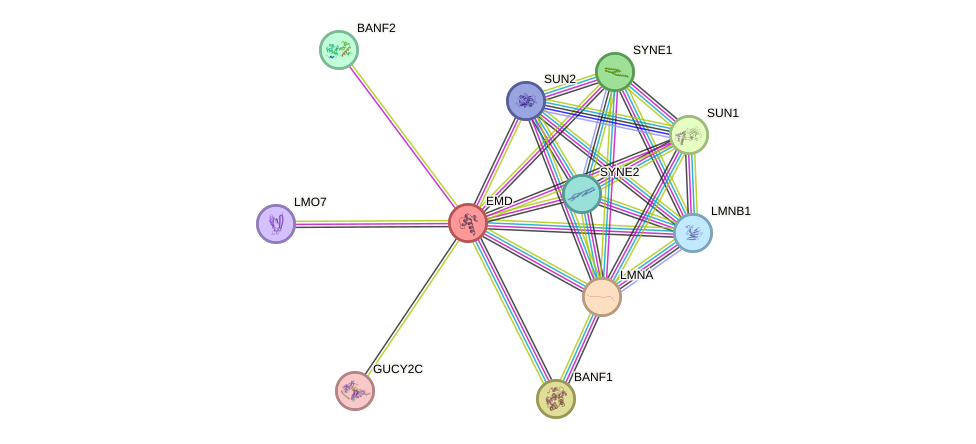GenAge entry for EMD (Homo sapiens)
Gene name (HAGRID: 121)
- HGNC symbol
- EMD
- Aliases
- STA; LEMD5
- Common name
- emerin
Potential relevance to the human ageing process
- Main reason for selection
- Entry selected based on evidence linking the gene product to a pathway or mechanism linked to ageing
- Description
EMD is likely involved in nuclear structure and stabilization. Mutations in EMD cause Emery-Dreifuss muscular dystrophy [618]. Some mutations in LMNA also cause the same disease. The relation between EMD and LMNA, and the functions of EMD in the nuclear lamina [1307], may indicate a role for EMD in ageing, even though at present this is just an unproven hypothesis.
Cytogenetic information
- Cytogenetic band
- Xq28
- Location
- 154,379,237 bp to 154,381,523 bp
- Orientation
- Plus strand
Protein information
- Gene Ontology
-
Process: GO:0006936; muscle contraction
GO:0007077; mitotic nuclear envelope disassembly
GO:0007084; mitotic nuclear envelope reassembly
GO:0007517; muscle organ development
GO:0035414; negative regulation of catenin import into nucleus
GO:0035914; skeletal muscle cell differentiation
GO:0046827; positive regulation of protein export from nucleus
GO:0048147; negative regulation of fibroblast proliferation
GO:0060828; regulation of canonical Wnt signaling pathway
GO:0071363; cellular response to growth factor stimulus
GO:0098609; cell-cell adhesion
And 1 more GO terms Cellular component: GO:0005635; nuclear envelope
GO:0005637; nuclear inner membrane
GO:0005640; nuclear outer membrane
GO:0005783; endoplasmic reticulum
GO:0005874; microtubule
GO:0005913; cell-cell adherens junction
GO:0016020; membrane
GO:0016021; integral component of membrane
GO:0031965; nuclear membrane
Show all GO termsFunction: GO:0003779; actin binding
GO:0005515; protein binding
GO:0048487; beta-tubulin binding
GO:0098641; cadherin binding involved in cell-cell adhesion
Protein interactions and network
- Protein-protein interacting partners in GenAge
- LMNA, HDAC3, EGFR, NCOR1, EGF, PRKDC, XRCC6, EMD, HDAC1, HSPA1A, LMNB1, JAK2, ESR1, CTNNB1
- STRING interaction network

